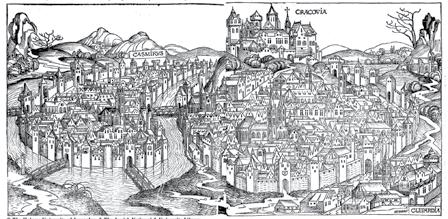
12 minute read
Kraków (Cracow
Kraków
(Cracow)
Advertisement
Cracow (or Kraków in Polish) is a dignified Gothic and Renaissance royal city, proud of its traditions, crowned by Wawel Royal Castle, where former rulers of Poland rest for eternity. But Cracow is also Poland’s party capital, a city that never sleeps, drawing throngs of foreign tourists hungering to tour the city’s impressive landmarks and thirsting for fun and entertainment.
Here and away
Cracow Airport – 11km Warsaw – 255km
Bratislava – 295km
Vienna – 330km
Budapest – 295km
Overview
�� 1257 759 k 327 km2 4153 PLN 171 k
Culture & Nature
�� 51 45 42 Food & Stay
20 k 1333 238
LEFT: View of Cracow from Hartmann Schedel’s Nuremberg Chronicle published in 1493 •

You can see the traditional faces of Cracow by strolling down the Royal Route, which runs from the Barbican, by St. Mary’s Basilica (aboVe), home of Veit Stoss’s Gothic altarpiece, to the renaissance Royal Castle at Wawel. The former Jewish district of Kazimierz presents an entirely different impression: after years of decline, it became a hotbed of trendy and atmospheric eating and drinking spots alluding to the mood and character of the area before the Holocaust. The postindustrial Zabłocie neighborhood has also recently become a fashionable district, when the MoCaK Museum of Contemporary Art was opened in the former Oskar Schindler enamelware factory, sparking the district’s revitalization •
Symbolic Cracow
Cracow was listed as a UNeSCo World Heritage Site in 1978, and as the former capital of Poland it has always enjoyed vast importance for Polish tradition, culture and memory-particularly symbolic memory, connected to national identity. The Wawel Cathedral (below with Wawel Royal Castle complex) became the first national pantheon, with the tombs of nearly all of the kings of Poland and their families. The first crowned ruler to rest there was Władysław ‘Elbow-high’ Łokietek, who died in 1333. Over succeeding centuries, Cracow became the burial place for outstanding figures from culture and science, national bards and leaders. The role of a national mausoleum was taken over in the 19th century by the Crypt of Distinguished Poles at Skałka (also in Cracow), now the resting place of Karol Szymanowski, Stanisław Wyspiański, Czesław Miłosz and others.
Nowa Huta, now a district of Cracow, was built in Stalinist times as a separate workers’ city with a huge steel mill complex, to serve as a counterweight to the conservative intelligentsia traditions of Cracow. It was designed to be Poland’s first fully socialist city, beautiful and comfortable, but also a symbolic stronghold of the proletariat, a guidepost on the way to the Sovietization that the whole country was supposed to be striving for. This stratagem of the communist authorities backfired, and Nowa Huta became a major centre for the Solidarity opposition movement. It stands today as a curiosity for fans of utopian architecture and urban planning •
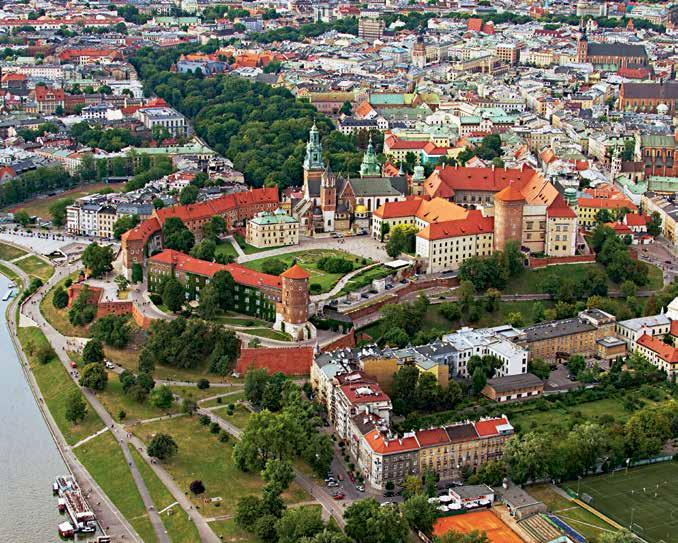
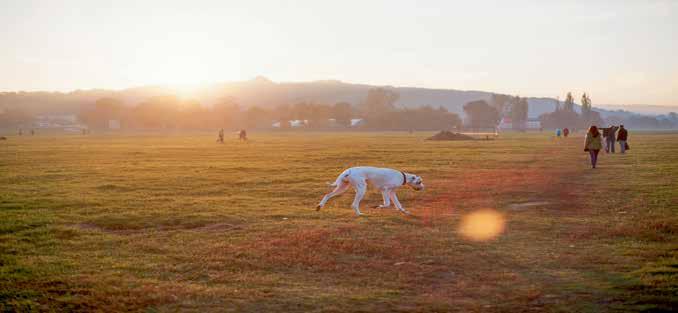
AbOVE: Błonia, a vast meadow in the city centre, lies less then 2km from the Old Town Square. Central Cracow is densely built up and short on green spaces, so the proximity of this big open park, with an impressive view of Kościuszko Mound and Sowiniec Hill, makes this a favourite spot for biking, walking, and other leisure pursuits •
RIGhT: Cracow-style nativity scenes (szopki), are richly-decorated multi-level structures containing miniature versions of Cracow’s architectural gems. They are meant to represent the scene of the birth of Jesus and became a Cracow tradition in the 19th century. By now, however, they have evolved far beyond anything that can be seen anywhere in Europe or even the world •
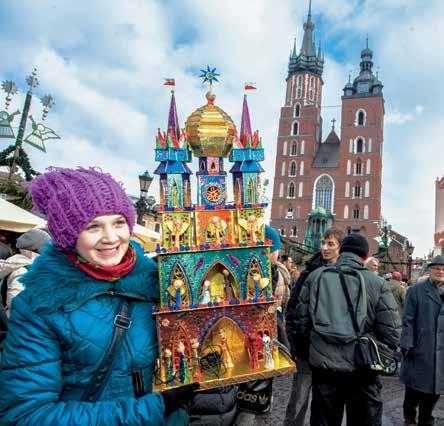
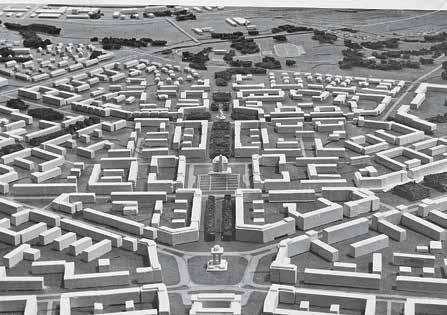
LEFT: Nowa Huta is not a district but a city within a city – artificially created in the middle of nowhere. says Karol Konwerski, computer game creator, and Nowa Huta resident.
Unlike Cracow, it’s not a patchwork of landmark tenements, churches and historic sites. ‘Huta’ is a whole, designed along the lines of the ideal Renaissance garden city. It’s an ideal socialist realist city, with at least one tree and one fallout shelter space allocated to each resident •
St. Mary’s Trumpet Call (RIGTh) – a melody played on the hour, every hour from atop one of the St. Mary’s Church towers by a trumpeter. The noon performance is always broadcast live around the world by Polish Radio’s Program I. Two trumpeters, professional firefighters, serve every 24 hour shift during which each one plays the melody 48 times as the trumpet call is played toward four directions •
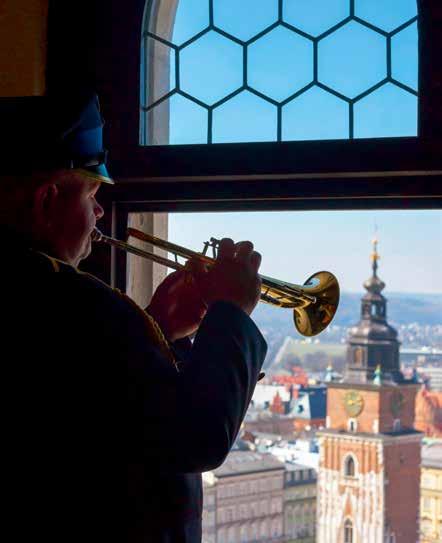
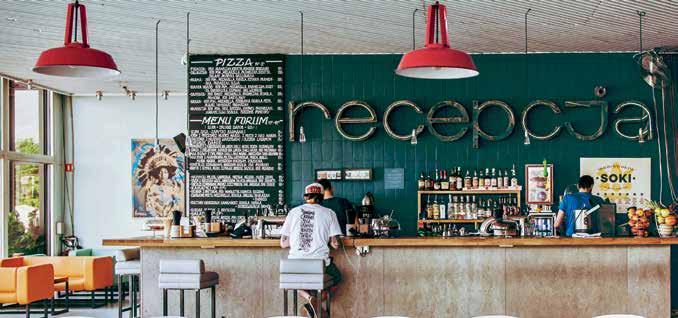

The Brutalist former Hotel Forum building (LEFT) was designed by Janusz Ingarden. Its construction stretched from 1978–1988, and the hotel was in service for a mere 14 years – closing in 2002. Today, the grim structure has been been brought back to life by the trendy Forum Przestrzenie cafe-club (AbOVE), which is decorated with artifacts from the hotel’s glory years •
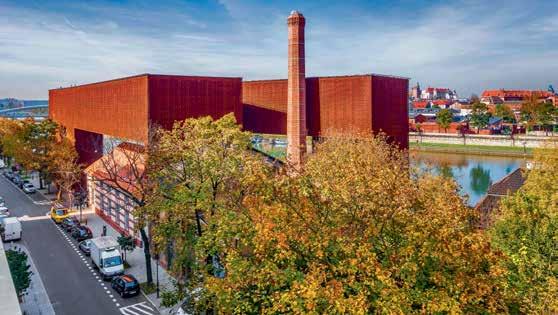
From Podgórze to Zabłocie
Artur Wabik, street artist, mural painter and author of art installations in public spaces
The fashion for specific districts in Cracow changes about once every five years. Some time ago, Podgórze located on the other side of the Vistula from the city centre, became an attractive location for artists and independent cultural institutions. Studios, galleries, cafés and alternative clubs, such as the famed Spółdzielnia Goldex Poldex, took root there.
In just a few months, streets such as Mostowa, Brodzińskiego, Nadwiślańska and Józefińska were transformed from dark alleys into the most fashionable strolling routes, chock full of crowded eating and drinking spots with gardens. Murals appeared on the side walls of ruined tenements, such as the ‘bell’ by the famous Italian street artist Blu. Over time these settlers were joined by major private and public developments, such as the new Cricoteka building – the Centre for the Documentation of the Art of Tadeusz Kantor (AbOVE), which opened in 2014.
Recently there has been a gradual but noticeable shift of artistic and cultural activity from Podgórze toward the neighbouring Zabłocie, whose post-industrial character offers artists greater creative freedom. This occurred after the grand opening of MOCAK , the Museum of Contemporary Art in Cracow (RIGhT). Walking from Podgórze to Zabłocie, from the site of the former ghetto to Schindler’s Factory, you can’t miss Mirosław Bałka’s sculpture ‘AuschwitzWieliczka’, the first work by this world-renowned artist to be permanently installed in a public space in Poland.
Another good place to visit is the former Miraculum cosmetics factory complex, where a dynamic conglomerate of cultural institutions was established in 2010–2012 around the Fabryka music club. In the narrow, post-industrial back streets of Zabłocie you can find authentic, non-institutional street art: stickers, posters and stencils, ceramic compositions, illegally installed sculptures, and graffiti lettering on the roofs •

John Paul II

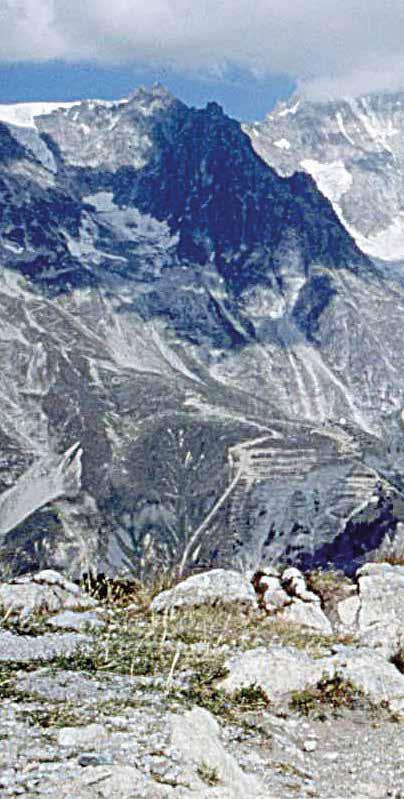
He loved sport and theatre. He hiked throughout his whole life. He was quick with a joke and could make a personal connection with anyone he met. Karol Wojtyła, better known as Pope John Paul II, headed the Roman Catholic Church for nearly 27 years and changed the image of the papac y. He opened the Vatican to the people.
His life was not idyllic. He was born on 18 May 1920 to a family of modest means in the small Galician town of Wadowice. As a boy, he experienced tragedy: his mother died when he was 8 and his older brother, a doctor, died a few years later. Despite growing up in a family of limited means, Lolek– as friends called him – was the top pupil in his class, wrote poems, and eagerly performed in school plays (including Sophocles’ Antigone). He frequently played football—most often goal, skied and was an excellent swimmer. In 1938, he began studying Polish literature at Jagiellonian University in Cracow. When World War II broke out, he had to interrupt his studies worked as a labourer at a quarry. Still he found time to nurture his theatrical passion, founding the Rhapsodic Theatre with his friends. After his father’s death, which affected him strongly, he entered the seminary in Cracow in 1942. Four years later he was ordained as a priest.
From the time he was elected pope, on 16 October 1978, and throughout his papacy, he made direct, lively contact with people, particularly young people. It was he who launched World Youth Day, an encounter between the pope and young people in the form of a religious festival. The first was held in April 1984 in Rome and drew 300,000 young people. World Youth Day was held in Poland for the first time in 1991, attracting over 1.5 million young pilgrims from all over the world to meet with the pope in Częstochowa. During his numerous pilgrimages—John Paul II visited 135 countries during his papacy—he always gathered crowds, and not only for mass. At 3 Franciszkańska Street in Cracow there is a famed window where the faithful gathered whenever John Paul II visited Poland. Standing at the window, he would maintain a dialogue
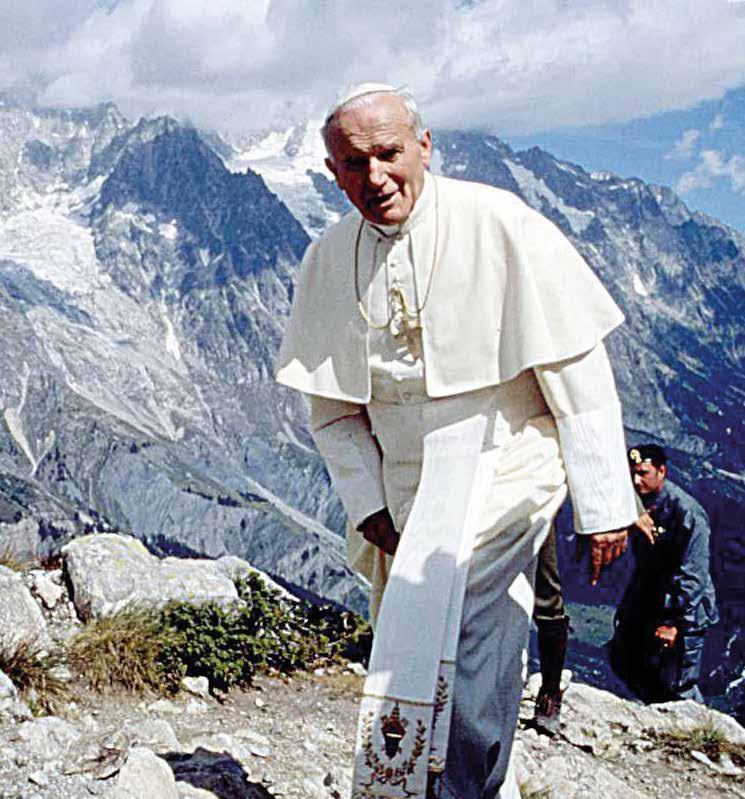
John Paul II was well known for his fondness for travel. In one of his proclamations he wrote: “I firmly hope that tourism will always be an occasion for fruitful encounters: the encounter with God, the encounter with oneself, and the encounter with others” •
with the crowd until late in the evening. During his first pilgrimage, on 6 June 1979, he joked: “When I was here in Cracow before I was a totally normal person. I never climbed out onto windows. And now look at what’s happened to me.”
The mountains were his natural habitat. It was there he escaped to think and breathe deeply. As pope he was a frequent guest in the Alps, but closest to him were the Tatras, where he hiked in the 1930s with his father and brother, and later as a young priest with friends and university students from from St. Florian’s parish in Cracow. It was during these outings— which, as other participants recall, could be arduous—that the students began calling him “Uncle,” so that the communist secret services suspicious of the church would not take an interest in this priest fraternizing with students. When he started working with students, Wojtyła also went on kayaking expeditions, for example on the Elbląg–Ostróda Canal at the foot of lake Jeziorak, and the Rurzyca, Słupia, Brda and Wda rivers (where the John Paul II Trail has been laid out). Each day began with mass at a field altar built of kayaks and paddles, and ended with singing and prayers around the campfire. During one of these expeditions Wojtyła learned that he had been appointed a bishop, and after he was elected pope he told his friends that he had “moved from a kayak to the Barque of St. Peter.”
When Wojtyła was a cardinal in Cracow, he was asked whether it was fitting for a cardinal to ski. The future pope answered in his typical fashion, “The only thing not fitting for a cardinal is to ski badly!” He skied avidly in the Tatras, on Nosal, near Kasprowy Wierch and Dolina Chochołowska.
As pope he returned to the Polish mountains again in 1983 and 1997. When he had a chance to rest from his papal duties he headed out for at least a small hike on the slopes of Abruzzo. “A person needs the beauty of the landscape,” John Paul II said of his beloved mountains. There he surely felt relaxed, swapping out his cassock for sportswear and sunglasses •
Zakopane Poland’s winter capital
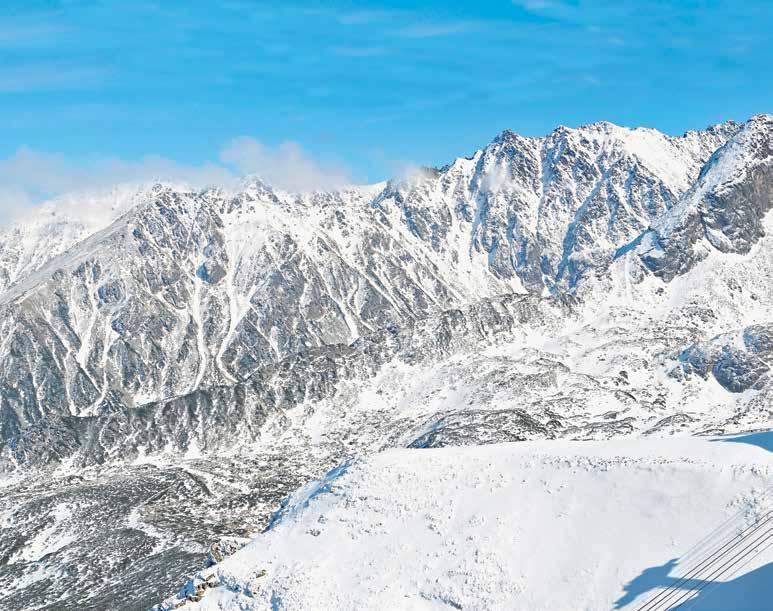
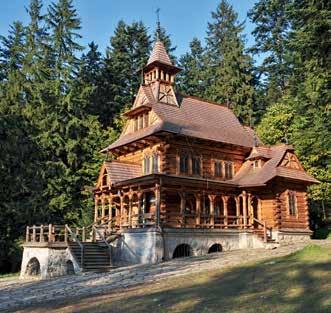
When the sky is clear and the air is pollutionfree (which doesn’t happen all that often in Cracow), you can admire the city’s landmarks against the distant panorama of the Tatras – Poland’s highest mountain range. The beauty and healthy climate of the mountains has drawn tourists since the late 19th century, when Zakopane became a popular resort town. To this day, it is known as Poland’s winter capital. While serving as a spa, Zakopane also became a cultural centre, visited or inhabited by prominent Polish figures such as novelists Henryk Sienkiewicz and Stefan Żeromski, composer Karol Szymanowski, architect Stanisław Witkiewicz, and his son the artist Stanisław Ignacy Witkiewicz (Witkacy). Stanisław Witkiewicz founded the Zakopane style of architecture, combining elements of the Podhale region’s folk art with the Secessionist style. Villas in this style (such as Atma and Dom pod Jedlami), as well as Jaszczurówka Chapel (lefT), still grace the city, which is visited by crowds – particularly during the winter sports season •
For the activelyinclined
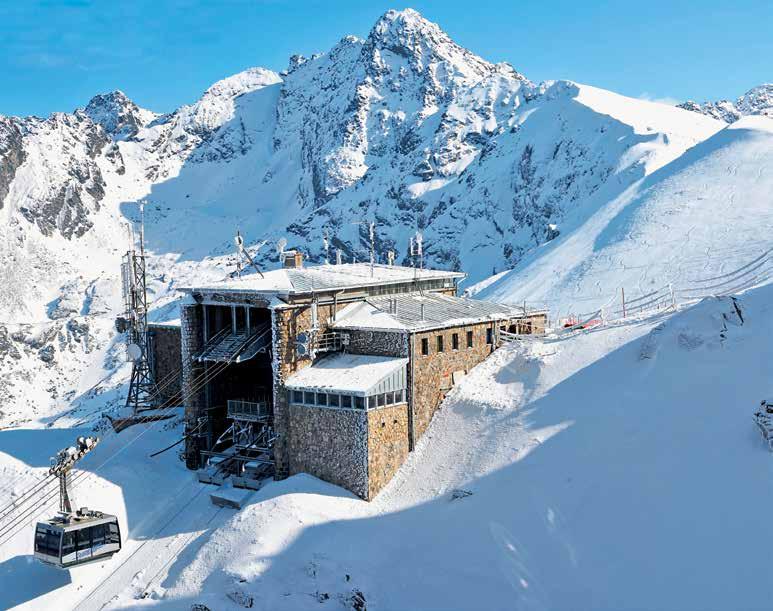
Jagna Marczułajtis, snowboarder, 14-time gold medallist in the Polish championships, twotime junior world champion, gold and silver medallist in the European championships
Apart from Zakopane itself, a lovely town, a must visit is the snow park in Witów – the biggest and most challenging one in Poland. Any winter sports enthusiast will be delighted! In the summer, there’s a great mountain biking race, the Joy Ride bIKE Festival (RIGhT). And throughout the year there’s always something to do in Zakopane’s Harenda district. Summer means cycling and mountain biking, with some very challenging routes on offer, and winter obviously means anything you can do in the snow. I recommend a visit to the Olympic Preparation Centre, where you will find Olympians training yearround, including ski jumpers and multiple world champion cross-country skier Justyna Kowalczyk. Personally, I love the Kasprowy Wierch mountain, which is beautiful year-round. The views have never failed to delight, and the approach by cable car is unmatched (TOP). Overall, it’s an excellent place! Back in Zakopane, I would also recommend the Witkacy Theatre. The plays can be challenging but are strongly tied to Zakopane and the local culture •
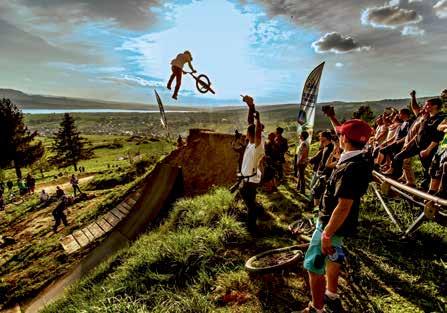
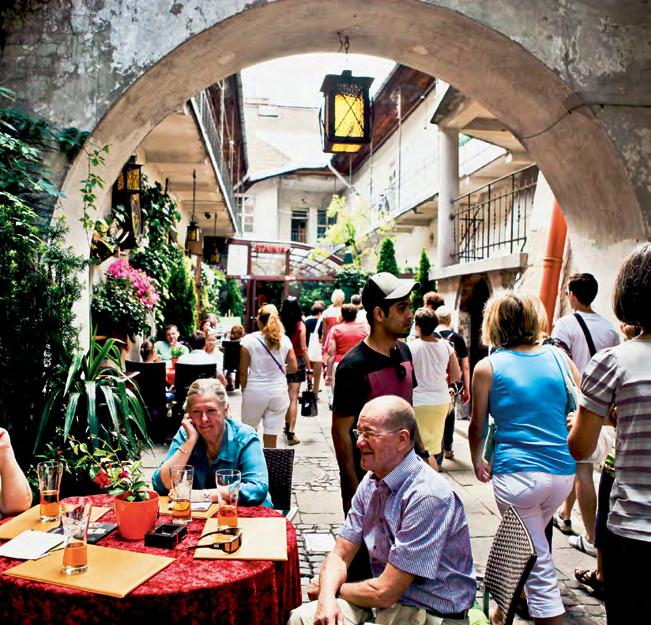
above: The Jewish Culture Festival in Cracow’s Kazimierz district has been held since 1988. It is currently one of the oldest and largest such festivals in the world. Each festival consists of more than 200 events which give each of the 30,000-plus participants the opportunity to not only observe but also personally experience Jewish culture •
right: Wieliczka Salt Mine near Cracow. One of the first twelve sites to be added to UNESCO’s World Cultural and Natural Heritage List in 1978. The nine-level underground city has its own well developed infrastructure and is more than 700 years old•
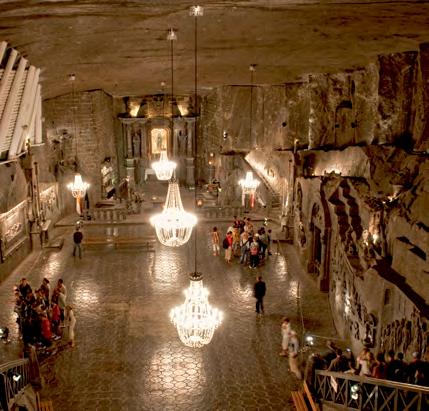
10 million tourists
from Poland and abroad visit Cracow every year
45
billion pln
are spent by tourists each year
20%
of Cracovians are employed in tourism
Visitors by nationality
English 20% German 13.8% Spanish 9.3% Italian 9.1% French 8.4% Russian 6.7% American (US) 4.5% Irish 3.6% Hungarian 2.3% Israeli 1.8% Czech 1.6% Swedish 1.6% Dutch 1.6% Ukrainian 1.4% Japanese 1.4% Canadian 1.3% Austrian 1.2% Norwegian 1.2% Belgian 1.1% Finnish 0.8% Slovak 0.7% Danish 0.7%










